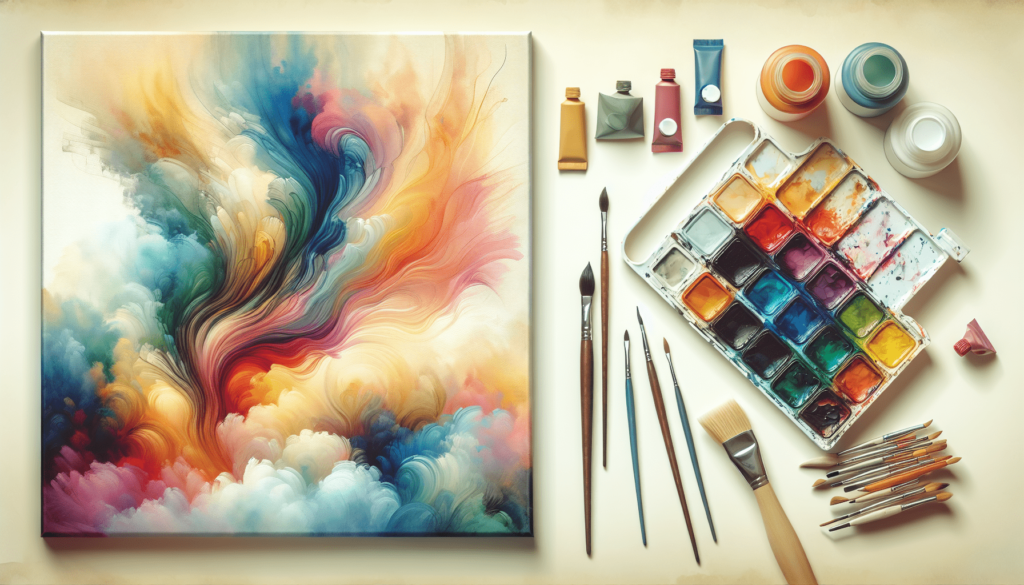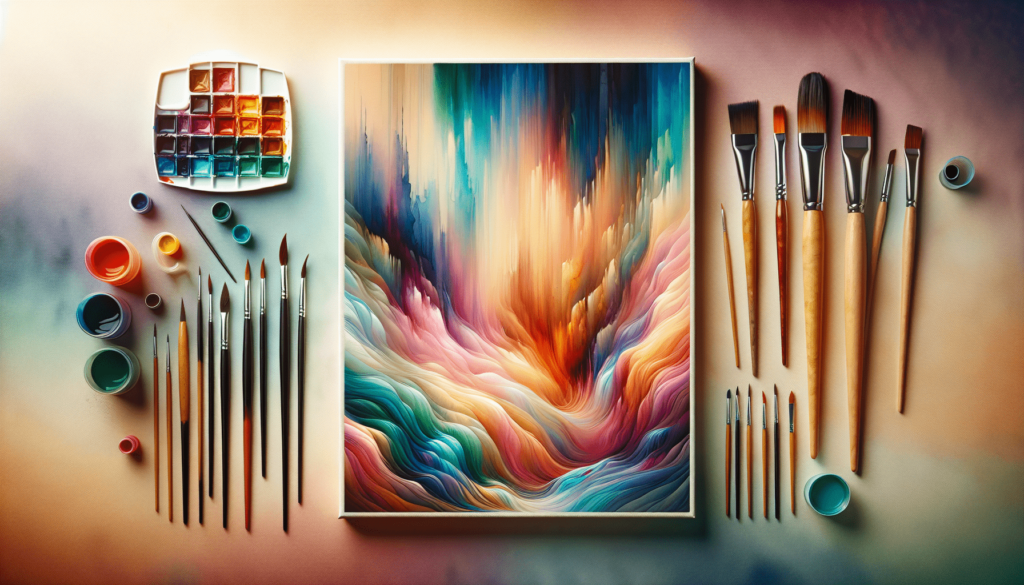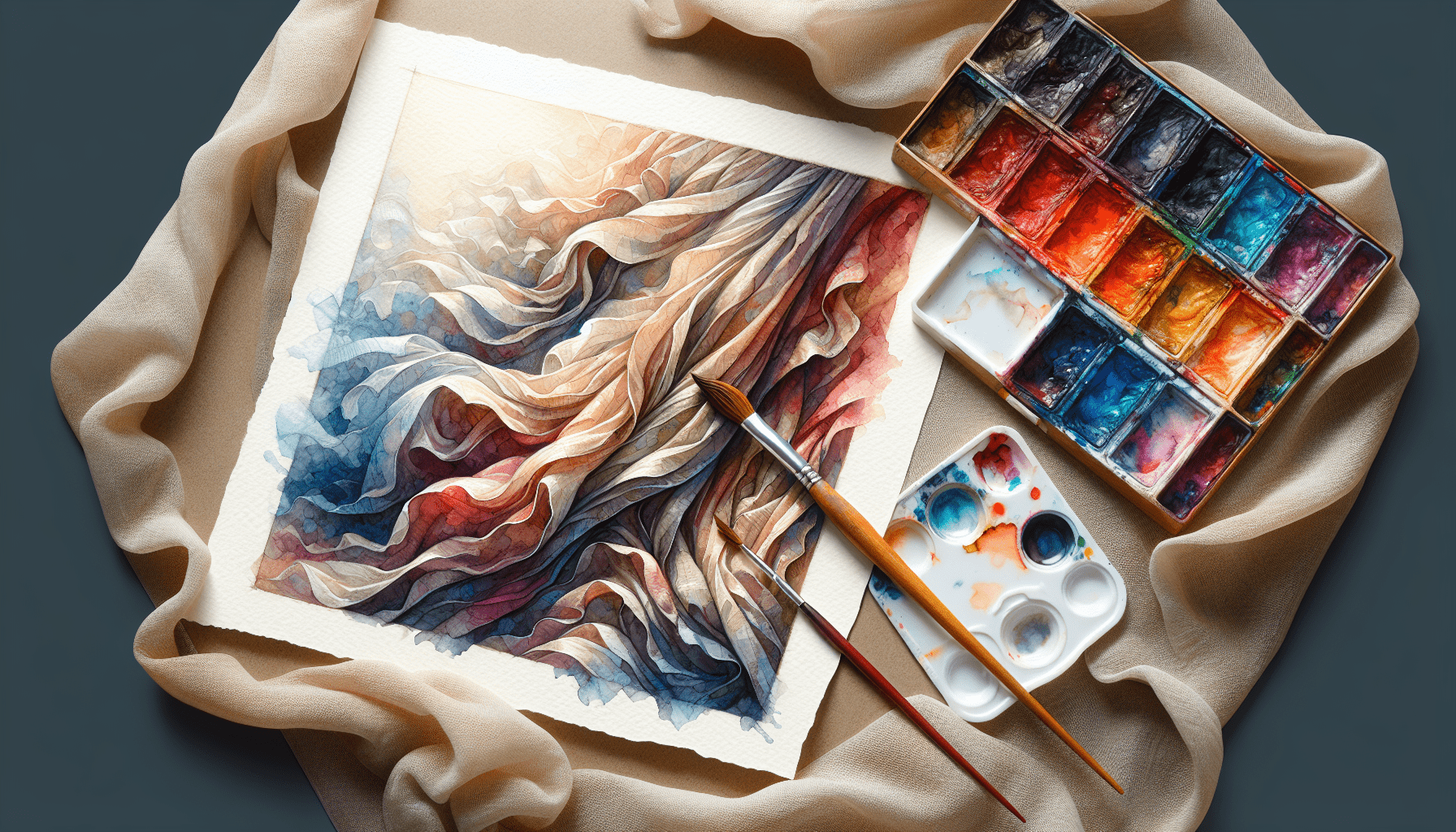Can You Paint on Canvas with Watercolors” explores the viability and techniques of using watercolors on a canvas medium. Although traditionally reserved for paper, watercolors can indeed be used on canvas when appropriate preparations are made. You will discover the essential steps needed to ensure that your watercolor pigments adhere effectively, including selecting the right type of canvas, applying a suitable ground, and understanding the impact of texture. This article will guide you through the process, allowing you to expand your artistic toolkit and experiment with new ways to express your creativity. Have you ever wondered if you can paint on canvas with watercolors? This question is common among both amateur and professional artists, especially those who are keen on exploring different mediums and materials. Watercolors have traditionally been used on paper, but the allure of canvas offers a tempting alternative due to its durability and texture. However, working with watercolors on canvas involves unique methods and considerations to achieve the desired effects.
Understanding Watercolors and Canvas
Before diving into techniques, it’s essential to understand the basic characteristics of watercolors and canvas. Watercolors are versatile and fluid pigments that react to water, allowing for transparency and layering effects. Canvas, on the other hand, is a robust, textured material traditionally used with oil and acrylic paints.
Characteristics of Watercolors
Watercolors are known for their vibrant, translucent quality and their ability to blend seamlessly. Here are some key attributes:
| Features | Description |
|---|---|
| Transparency | Allows light to pass through, creating luminous colors. |
| Layering | Multiple layers can be applied without losing the underlying hues. |
| Flow | Water facilitates smooth blending and soft edges. |
| Reworkable | Can be reactivated with water, enabling adjustments. |
Characteristics of Canvas
Canvas, typically made from cotton or linen, provides a sturdy and textured surface. Its key attributes are:
| Features | Description |
|---|---|
| Durability | Strong and long-lasting material. |
| Texture | Offers a textured surface that can add depth to paintings. |
| Versatility | Suitable for various painting mediums like acrylic and oil. |
Can You Paint on Canvas with Watercolors?
The straightforward answer is yes, but with reservations and specific techniques. Standard canvas is not inherently designed for watercolors due to its absorption properties and texture; however, with the right preparation and methods, it can certainly be used.
Preparing the Canvas
To use watercolors on canvas, surface preparation is crucial. The canvas must be treated to prevent excessive absorption of water and pigment. Let’s delve into the steps necessary for preparing your canvas.
Priming the Canvas with Gesso
Applying a few coats of watercolor ground or gesso to your canvas is the first step. Gesso helps control the canvas’s absorbency and provides a suitable surface for the watercolor to adhere.
- Select Your Gesso: Choose a quality acrylic gesso.
- Apply the First Coat: Use a wide brush to apply an even layer of gesso. Allow it to dry completely.
- Sand the Surface: Sand lightly to smoothen the first coat.
- Repeat: Apply additional coats and sand in between until you achieve the desired smoothness.
Using Watercolor Ground
Watercolor ground, specifically designed for use with watercolors, can also be applied to your canvas. It creates a more absorbent surface mimicking watercolor paper.
- Choose Watercolor Ground: Ensure it’s designed for watercolors.
- Apply with a Brush: Spread an even coat over the entire canvas.
- Allow to Dry: It might take several hours to dry completely.
- Multiple Layers: Apply several layers for optimal results, allowing each layer to dry and lightly sanding between layers.
Techniques for Watercolor on Canvas
Once the canvas is prepped, executing watercolor paintings on it requires some adjustments compared to paper. Below, we’ll discuss techniques that work well for watercolor on canvas.
Dry Brush Technique
The dry brush technique involves using a minimal amount of water, allowing more control over the paint. This technique is particularly effective on the textured surface of a canvas.
- Load Brush with Paint: Use a small amount of water to pick up the watercolor pigment.
- Brush on Canvas: Apply with short, controlled strokes.
- Layering: Build up layers to achieve depth.
Wet-on-Wet Technique
This method involves applying wet paint onto wet canvas, creating soft, diffused edges.
- Moisten the Canvas: Dampen the area of the canvas you intend to paint.
- Apply Watercolor: Use a wetter brush to apply the paint, letting colors blend naturally.
- Control Spreading: Adjust water usage depending on desired spreading.
Glazing
Glazing involves applying transparent layers of watercolor over dried sections, enhancing depth and richness.
- Base Layer: Let the initial layer dry completely.
- Overlay: Apply a thin, transparent layer of watercolor over the dried paint.
- Repeat: Continue layering to build up color intensity.

Troubleshooting Common Issues
Painting with watercolors on canvas can present specific challenges not encountered with paper. Here are common issues and solutions:
Issue: Paint Not Sticking
Solution: Ensure the canvas is adequately primed. If the surface is too slick, additional layers of gesso or watercolor ground might be necessary.
Issue: Colors Not Blending
Solution: Work on smaller sections at a time and keep the surface damp. Experiment with the amount of water used to achieve better blending.
Issue: Paint Lifting
Solution: Avoid overworking any area. Once the paint is dry, touching it up too much can reactivate the pigments, leading to unintended lifting.
Best Practices and Tips
Maintenance of Supplies
Maintaining your brushes, paints, and canvas is key to achieving the best results.
- Clean Brushes: Ensure brushes are thoroughly cleaned after use to prevent residual paint from hardening.
- Store Paints Properly: Keep watercolor tubes and pans sealed to avoid drying out.
- Canvas Care: Store canvases in a cool, dry place to prevent warping.
Experiment and Practice
Every artist’s technique varies. Experiment with different methods and practices to find what works best for you. Practice is essential in mastering watercolors on canvas.

Conclusion
Painting with watercolors on canvas offers a unique blend of traditional watercolor effects and the intriguing texture of canvas. While it requires careful preparation and specific techniques, it can yield stunning and durable works of art. Through understanding the properties of both watercolors and canvas, adequately preparing your canvas, and employing appropriate techniques, you can expand your artistic repertoire and create compelling watercolor paintings on canvas.
By mastering the nuances of this medium, you can explore new artistic horizons and add a unique dimension to your work. So, can you paint on canvas with watercolors? The answer is a resounding yes—with preparation, patience, and practice.



